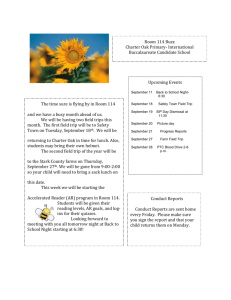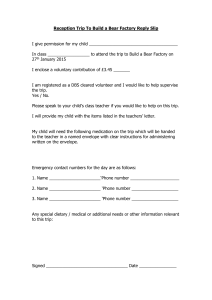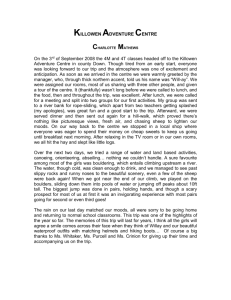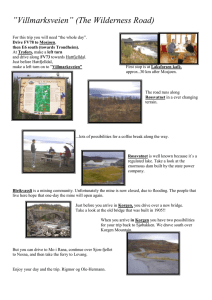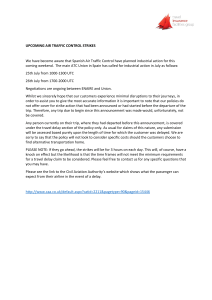Journal Guidelines
advertisement
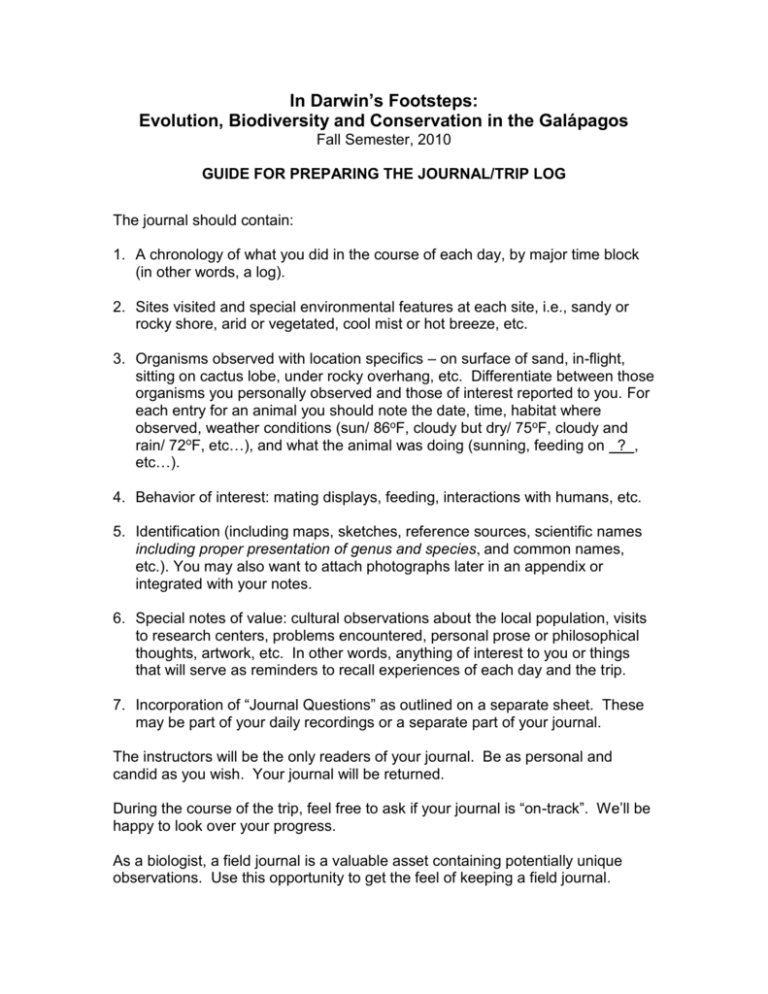
In Darwin’s Footsteps: Evolution, Biodiversity and Conservation in the Galápagos Fall Semester, 2010 GUIDE FOR PREPARING THE JOURNAL/TRIP LOG The journal should contain: 1. A chronology of what you did in the course of each day, by major time block (in other words, a log). 2. Sites visited and special environmental features at each site, i.e., sandy or rocky shore, arid or vegetated, cool mist or hot breeze, etc. 3. Organisms observed with location specifics – on surface of sand, in-flight, sitting on cactus lobe, under rocky overhang, etc. Differentiate between those organisms you personally observed and those of interest reported to you. For each entry for an animal you should note the date, time, habitat where observed, weather conditions (sun/ 86oF, cloudy but dry/ 75oF, cloudy and rain/ 72oF, etc…), and what the animal was doing (sunning, feeding on ? , etc…). 4. Behavior of interest: mating displays, feeding, interactions with humans, etc. 5. Identification (including maps, sketches, reference sources, scientific names including proper presentation of genus and species, and common names, etc.). You may also want to attach photographs later in an appendix or integrated with your notes. 6. Special notes of value: cultural observations about the local population, visits to research centers, problems encountered, personal prose or philosophical thoughts, artwork, etc. In other words, anything of interest to you or things that will serve as reminders to recall experiences of each day and the trip. 7. Incorporation of “Journal Questions” as outlined on a separate sheet. These may be part of your daily recordings or a separate part of your journal. The instructors will be the only readers of your journal. Be as personal and candid as you wish. Your journal will be returned. During the course of the trip, feel free to ask if your journal is “on-track”. We’ll be happy to look over your progress. As a biologist, a field journal is a valuable asset containing potentially unique observations. Use this opportunity to get the feel of keeping a field journal. The journals will be due within several days of our return. This will allow you some time to record any reflections on the experience and catch up on daily recording. But beware of a pitfall here – if you get too far behind during the course of the trip, it is very hard to recall the details that will make your journal a vital record of your trip.





